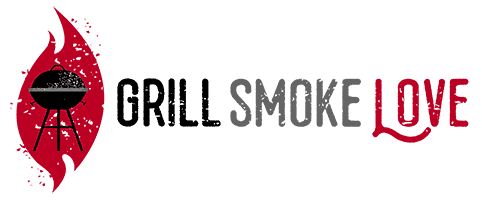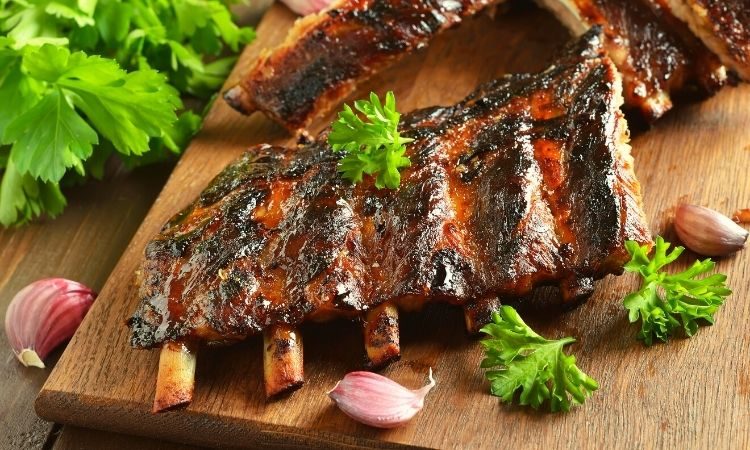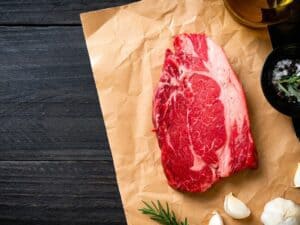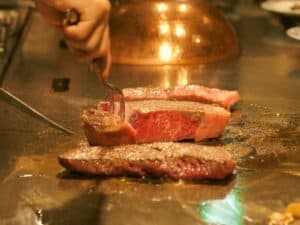Nothing beats barbecue ribs. They’re as satisfying as they are messy.
But they are also a bit complicated, with different cuts from different animals.
So when it comes time to try your hand at these miracles of the pit, what type will you choose?
Read on for explanations of the most popular types of pork, beef, and lamb ribs and how to cook them right.
Types of Pork Ribs
In barbecue, pork ribs are the most common choice. There are a few reasons, but they have an excellent ratio of meat to fat. Plus, they’re just the right size for most backyard cookouts.
They don’t take too long to cook — although doing it right still takes the better part of an afternoon. But the results are always a crowd-pleasing feast.
1. Pork Baby Back Ribs
Baby back ribs come from the top of the rib rack or that part closest to the backbone. Since this is also close to the pork loin cut, they’re sometimes called loin back ribs.
A distinctive curve of the bone identifies baby backs, which comes from where the ribs meet the spine. They tend to be leaner than other cuts from the rib cage. Usually, they’re between three and six inches long.
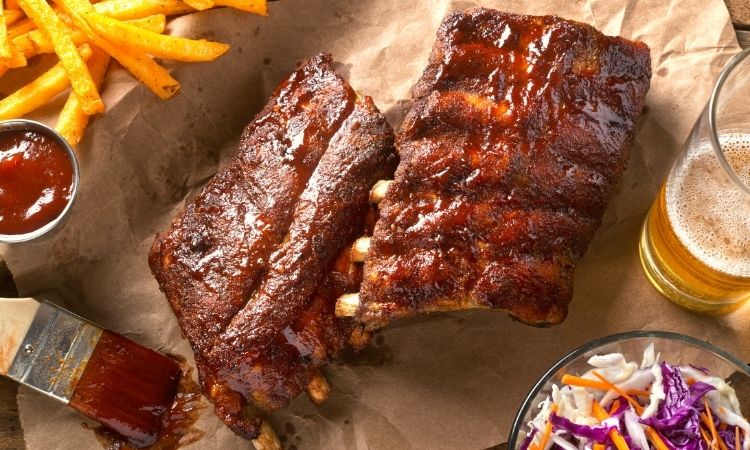
How to Cook It
All types of ribs contain a lot of connective tissue. Any cooking process will require low temperatures for an extended period of time to break that down. Once it has broken down, the magic happens. A properly cooked pork rib is flavorful and fall-off-the-bone tender.
The best methods for getting it right are slow cooking methods, as you might expect. One of my favorite options is to slow cook the ribs on gas grill in foil. The important thing is to ensure they cook long enough without drying out.
Smokers and slow cookers are also excellent choices. Afterwards you can finish them on the grill to make the surface nice and crispy.
2. Pork Spareribs
When the cuts come from the side and bottom of the rib cage, they are called spare ribs. These can go all the way around to the breastbone and are sometimes called side ribs.
Spare ribs have less curve than baby backs. There is more cartilage and gristle, too. Some people like the flavor more than baby backs, but that’s entirely subjective and likely more related to the cooking technique.

How to Cook It
Spare ribs are usually bigger than baby back cuts, so cooking times will increase. However, in general, there is no difference in cooking this type of pork rib other than increased cooking time.
Read also: How long to smoke spare ribs at 225?
3. St. Louis Cut Ribs
The St. Louis cut is a spare rib trimmed a bit more. You won’t get the same bulk of gristle and cartilage at the bottom of the ribs as you will with spare ribs, and that’s great for presentation and quicker cooking.
The result is a bigger cut than baby backs but smaller than full spare ribs. St. Louis ribs are harder to find — you might have to make a special request at the grocery store or find a high-end meat monger. Of course, you could also buy a full spare rib cut and trim it yourself.
You might also hear about the Kansas City-style rib, which is very similar but not trimmed quite as much as a St. Louis rib.
How to Cook It
There’s no difference in cooking technique when dealing with a St. Louis or Kansas City rib cut. Any spare rib recipe will work fine.
Types of Beef Ribs
Compared to pork ribs, beef ribs are larger, of course. But the butchers usually make up for this by trimming the cuts smaller, meaning that cooking times are not unreasonably lengthy.
Beef ribs are also different in makeup and consistency compared to pork. Beef is nearly always fattier, with fat on top of the bone and marbling in the meat.
4. Beef Baby Back Ribs
Beef back ribs are similar to pork baby backs in that they come from the top of the rib cage, where they connect to the backbone.
There are big differences between the cow and pig, however. Beef back ribs are not as meaty as pork backs. They’re mostly bone and fat, with a smaller portion of edible meat.

How to Cook It
Beef ribs contain even more connective tissue per capita than pork ribs. With that in mind, you’ll want to take extra time preparing the cut for cooking.
5. Beef Short Ribs
Beef short ribs are the cattle equivalent of the pork spare rib. They come from the sides of the rib cage.
So why are they called short?
Generally, the butcher cuts them much smaller proportionally than pork ribs. As a result, beef short ribs are usually only three or four inches long.
These are the preferred rib cuts from beef. They have a lot more meat than the back ribs, and they’re just as satisfying as they sound.
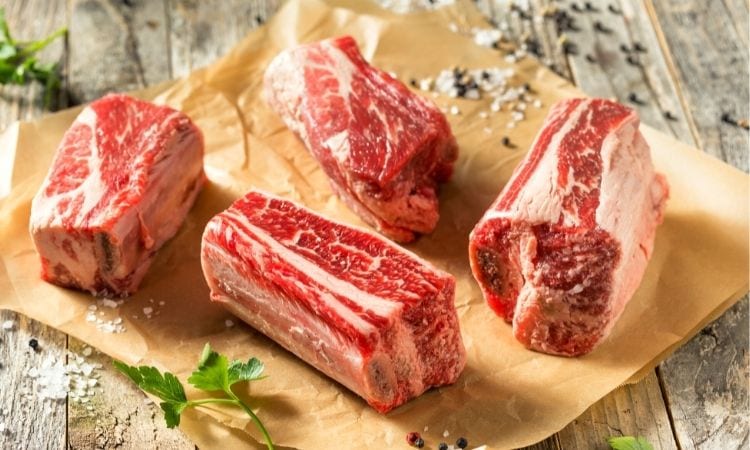
How to Cook It
The small cut of the beef short rib means it will fit in a slow cooker or be easily wrapped in foil on the grill or smoker. Any of these methods will result in wonderful results.
However, like all ribs, the best results come from braising. No matter how you put the heat to them, lots of liquid and low temperatures are essential.
6. Flanken Style Ribs
If you enjoy Korean-style barbecue, you might have heard of Flanken-style ribs.
These are thin cuts taken from the rib cage. Each slice contains a small cross-section of rib bones. They’re usually only between a quarter and a half-inch thick.
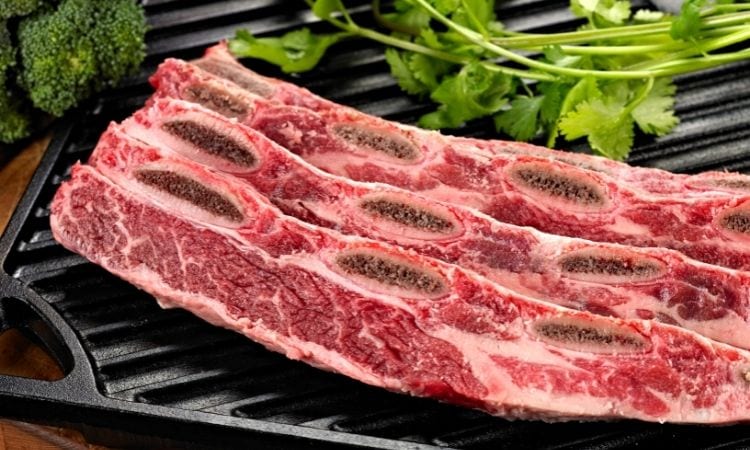
Unless you’re in an Asian grocery store, you will probably have to make a special request for these rib cuts. Flanken-style cuts are different from “English cuts” in that they are cut across the rib rack instead of between the ribs.
On an English cut, you will have one long piece of rib bone with a large chunk of meat. A Flanken cut has pieces of several ribs and all of the meat and tissue in between.
How to Cook It
The unique cut of Flanken-style ribs means you need to bring some unique rib cooking techniques to your grill. Since they’re sliced thin, you can get away with much faster cooking methods. Most recipes will have you marinate the ribs for a few hours before hitting a grill or griddle.
Do be careful of errant bone fragments, however. Since the bones are sliced horizontally, the process inevitably produces a few that you’ll want to clean off before cooking.
Read also: How to Cook a Tomahawk Steak on a Gas Grill
Types of Lamb Ribs
Rib cuts come from the lamb rack. It contains 16 ribs total and is usually sold halved in sets of eight. A common preparation is to have the bones exposed a few inches at the end, called “Frenched.”
Lamb rib chops are a typical cut that you will often find. These are cut from the rack and full of flavorful meat and fat. They’re coveted for their smooth flavor and texture.
7. Lamb Riblets
The riblets come from the bottom of the rack, where the ribs meet the breast. They remain when the rest of the rack is cut into chops. The riblets are small but have a surprising amount of meat. However, there is also a large fat cap on one side of them.
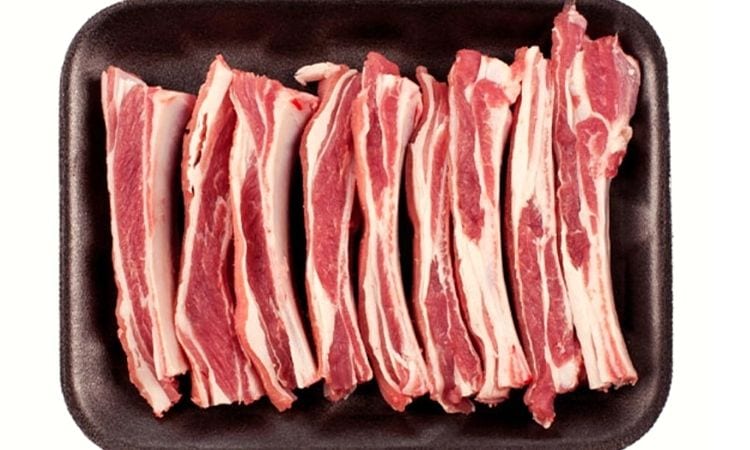
How to Cook It
While many lamb rib chop recipes call for quick cooking, on the grill, pan, or roasting in the oven, the riblets should be treated like other rib recipes. That fat and connective tissue will need some time to break down and make flavorful results.
However, lamb riblets are more forgiving and can be prepared quicker than pork or beef ribs. That makes them suitable for grilling recipes as long as you understand preparation basics.
Now it’s up to you to choose which type of ribs you want and start cooking!
PS. If you are new to barbecue, choose one of our recommended smokers for beginners for great results.
